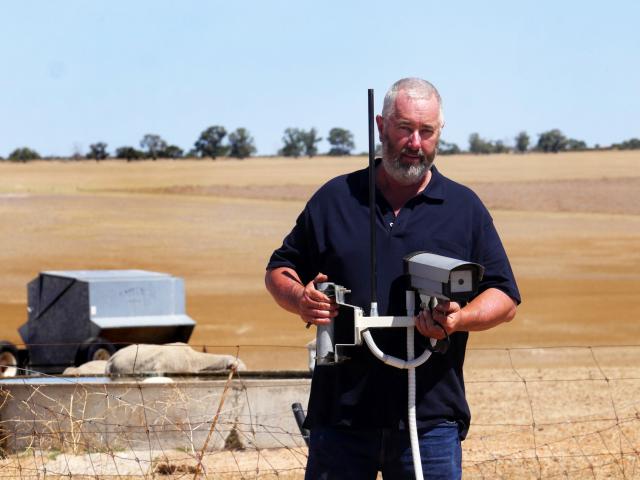Case study of the month: remote cameras drive efficiencies
New technology deployed by one Mid West sheep enterprise is capturing more than just pretty pictures — it is driving efficiencies and delivering peace of mind.
Owners: Robyn and Chris Patmore
Property location: Five farms in the Three Springs, Irwin, Morawa and Perenjori shires.
Property size: 10 000 hectares
Stock: 100 per cent sheep - 4000 Merino ewe flock and Border Leicester and Poll Dorset studs. The eastern country is leased out for winter cropping so the sheep graze the stubbles during summer.
Lambing: 100-115 per cent
Technology: Remote monitoring cameras
Average annual rainfall: 290-450 millimetres
Chris and Robyn Patmore run 4000 Merino ewes as well as Riverbend Poll Dorset and Border Leicester studs on 10 000 hectares. The stock are run largely on summer stubbles on five properties across four shires from the home farm in Eneabba to Morawa and Perenjori.
During summer one of the biggest chores used to be the water run. A seven hour, 350 kilometre round trip, every few days.
“Ninety per cent of the time when you get to the troughs there is nothing wrong and you’ve wasted a day and three quarters of a tank of fuel,” Mr Patmore said.
However, five years ago the Patmores invested in their first camera to remotely monitor the water troughs.
Now, 15 cameras later – without even leaving the house – Mr Patmore can view a snapshot of each water point on his mobile phone.
The cameras enable him to keep an eye on the watering points even while he is away travelling in his role as Pastoralists and Graziers’ Association livestock committee chairman.
As the sole labour unit on the farm, Mr Patmore said the value of the cameras went well beyond simply the dollars saved. “It’s better peace of mind when you are away and better time management when you are at home,” he said.
Camera set-up
The Patmores’ cameras, which are solar powered and take time-lapse and on-demand images, cost around $1500 each. There is an annual data cost of $200-$300 per camera, and an ongoing cost of a new $25 battery every two to three years.
Each stockwater tank has a level gauge which can be seen from a distance. The camera is positioned on a star picket, and its line of sight takes in the trough in the foreground and tank in the background, capturing the water levels in the trough and tank in one shot.
Given issues of network coverage in the bush, Mr Patmore pointed out that the cameras didn’t need much of a mobile signal to send still photos.
“You can have a camera 20 or 30 kilometres from a mobile phone tower and it still works fine,” he said. “The camera’s broomstick aerial gives a lot better coverage than a normal handheld phone. You could even use a satellite sim card.”
Business case
Economist Peter Rowe has analysed the Patmores’ investment in camera technology on behalf of the SIBI project.
Mr Rowe concluded the cameras had enabled Mr Patmore to cut his water runs from 60 a year to around 18, saving 42 runs.
For an initial investment of $22 500 for 15 cameras, the savings in wages and fuel and vehicle operating costs including depreciation and interest savings represented $21 400 a year. The payback period for the 15 cameras was two years.
Mr Rowe said the distances travelled didn’t need to be so large for the camera technology to be profitable.
“Even if you travel five kilometres from the farm house to the back paddock and back, once a week during summer, the technology starts to pay for itself,” Mr Rowe said.
For more information on this case study, please contact Development Officer John Paul Collins, john.collins@dpird.wa.gov.au
Disclaimer: Mention of product names should not be taken as endorsement or recommendation.

